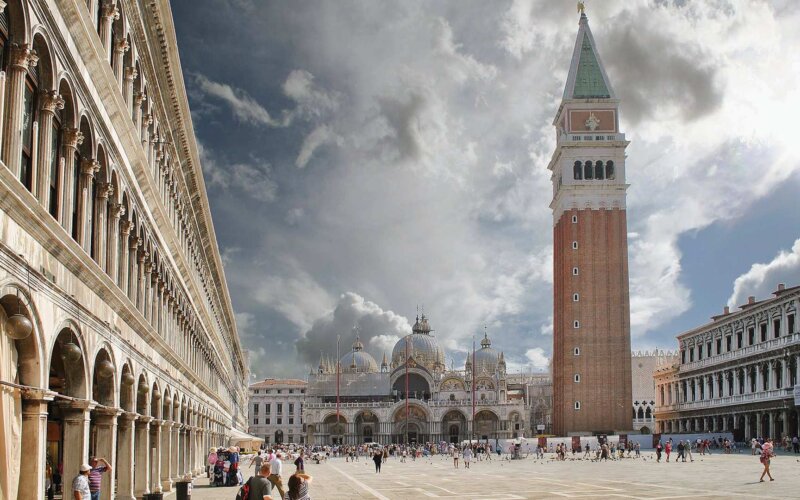The architectural period, called the High Renaissance, is considered as the apogee of art Italian Renaissance. It lasted around fourteen years, from 1490 with the Last Supper of Leonardo Da Vinci until 1527, when Charles V ordered his troops to sack Rome.
The main characteristic of Renaissance Architecture in Italy consisted of symmetry, geometry, and proportion. Many outstanding buildings in the country can be listed. Still, the most impressive ones belonged to this period, and they are the Tempietto, the Palazzo Farnese, and the Palazzo Pandolfini.
During this period, we cannot fail to mention three architects who imposed their style and defied attachment to the early Renaissance: Bramante, Sangallo, and Raphael. They revived the style and the ability to apply their architectural concepts in churches and the structures of the city. They were turning the style into a more decorative and ornamental one with domes and structures even more dominant.
The Tempietto, or “the small temple”, was designed by Donato Bramante around 1502 in the courtyard of St. Pietro in Montorio. Slender Tuscan columns perfectly proportion it. While a Doric entablature and a dome are the highlights of this imposing masterpiece, that means an attempt to conciliate Christian and humanist ideals.
The Palazzo Farnese was designed by Antonio da Sangallo the Younger and Michelangelo around 1515. A building of stuccoes brick with beautiful proportions that has a powerful effect by their stately repetition of finely detailed windows and the massive rusticated portal. It is considered the most magnificent palace of this period.
Fond of Italian Architecture?
Take a Virtual Tour Now!
Immerse yourself in the most significant places in our history.
CHOOSE NOW YOUR FIRST ITALIAN ARCHITECTURE VIRTUAL TOUR
ROME - The Colosseum, Beasts & Gladiatorial GamesROME - Imperial Forum Full Immersion
ROME - Rise and Fall
VENICE - Journey into St. Mark’s Basilica, the Venetian Gem
VENICE - Once-in-a-lifetime Virtual Toure
MILAN - Duomo Cathedral and City Center Tour
FLORENCE - The Heart of Renaissance Florence: Duomo and Baptistery
FLORENCE - Highlights of the Uffizi Gallery
POMPEII - The City Frozen in Time
POMPEII - Discover Pompeii Hidden History with a Local
HERCULANEUM - Ancient Rome
SICILY - The Heart of Palermo
SICILY - Syracuse Virtual Tour
Raphael Sanzio da Urbino, an Italian painter and architect, together with Michelangelo and Leonardo da Vinci formed the traditional trinity of greatest masters of this period. Raphael designed numerous buildings, but others finished most of them. The most influential work was the Palazzo Pandolfini in Florence, with two stories of strongly articulated windows.
The term applied to the artistic style, which is mainly Italian, is “Mannerism” which appears before the Baroque art in the early 17th in some regions. It marked diverse tendencies, and in opposition to the High Renaissance predecessors, the mannerist architects exploited other qualities of ancient Roman architecture like the extreme sophistication, complexity, and novelty. The leading representative architects of this tendency were Michelangelo, Peruzzi, Romano, and Andrea Palladio, and Giacomo Della Porta, with their fabulous creations.
The building Villa Farnesina, unusual for its frescoes walls, and the Palazzo Massimo alle Colonne, with its peculiar façade curves gentle around a curving street in Rome, are the most famous works of Baldassare Peruzzi. On the other hand, Michelangelo Buonarotti built, with outstanding designs, the St. Peter’s Basilica, which has the most extensive interior when it comes to Christian churches. Michelangelo reverted to Bramante’s Greek-cross plan and redesigned the piers, the walls, and the dome. He gave the lower weight-bearing members massive proportions and eliminating the encircling aisles from the chancel and identical transept arms.
Page Under Revision
This page is under review and updating. Sorry for the inconvenience.
If you don't find the information you were looking for, do not hesitate to contact us. We are more than happy to assist you.



